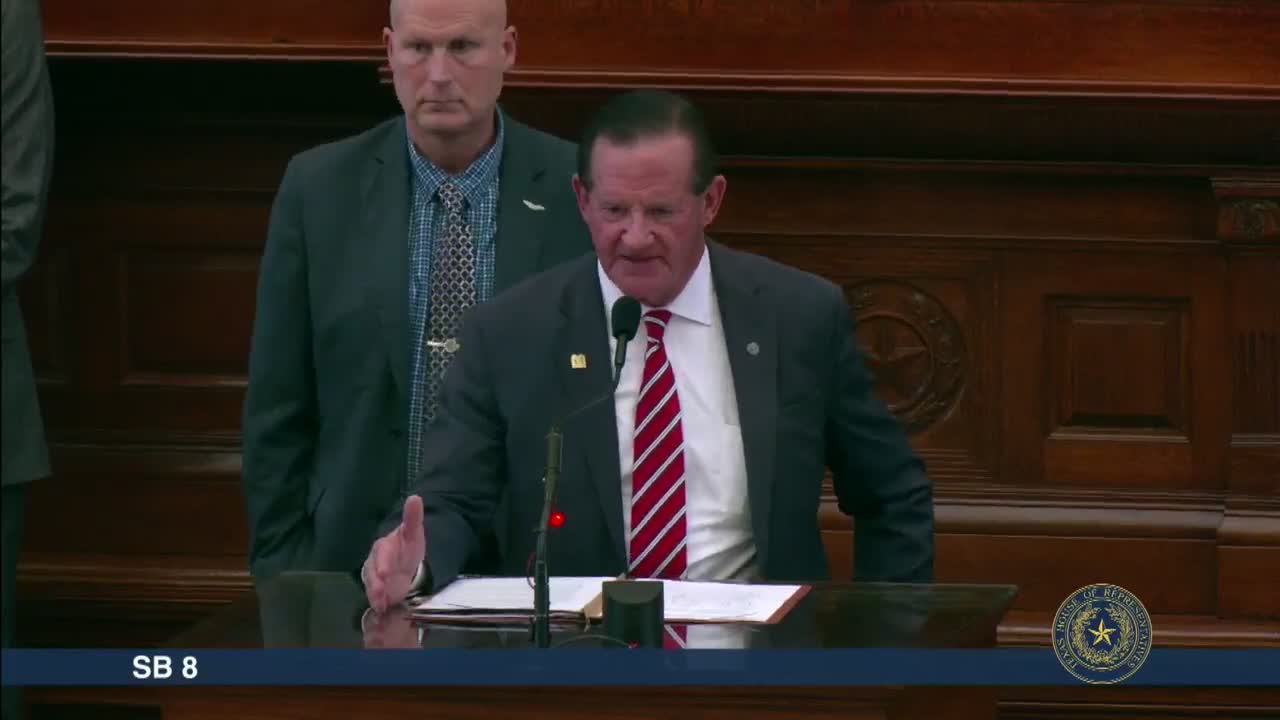Texas lawmakers pass controversial warrant service officer program amid immigration debate
May 25, 2025 | HOUSE OF REPRESENTATIVES, Legislative, Texas
This article was created by AI summarizing key points discussed. AI makes mistakes, so for full details and context, please refer to the video of the full meeting. Please report any errors so we can fix them. Report an error »

Texas lawmakers made significant strides in addressing immigration enforcement during the House Legislative Session on May 25, 2025, with the passage of a bill aimed at enhancing the warrant service officer model in county jails. This legislation, which received overwhelming support, is expected to standardize procedures across the state, ensuring that individuals arrested on state charges are properly vetted for federal warrants, particularly those related to immigration.
The bill's proponents, including Sheriff Lauderback, emphasized its effectiveness and cost-efficiency, arguing that it would streamline operations within the criminal justice system. By codifying the warrant service officer model into state law, the legislation aims to provide clarity and consistency across Texas counties, reducing the discrepancies that currently exist in how different jurisdictions handle immigration-related detainers.
However, the bill faced opposition from several lawmakers who raised concerns about its potential impact on immigrant communities. Representative Morales passionately argued that the legislation could foster fear among residents, discouraging them from reporting crimes or seeking help from law enforcement. She highlighted the importance of trust between immigrant communities and police, asserting that the bill could undermine public safety rather than enhance it.
Financial implications were also a focal point of the discussion. While the bill includes provisions for federal grants to support its implementation, some representatives expressed concerns about the projected costs for counties, which could range from $40 million to $75 million statewide, while the allocated federal funding stands at only $20 million.
Despite the contentious debate, the bill ultimately passed with a vote of 89 to 15, marking a pivotal moment in Texas's approach to immigration enforcement. As the legislation moves forward, its implementation will be closely monitored to assess its impact on both public safety and community relations. The next steps will involve ensuring that counties are adequately prepared to adopt the new model while addressing the concerns raised by opponents regarding its broader implications for immigrant families across Texas.
The bill's proponents, including Sheriff Lauderback, emphasized its effectiveness and cost-efficiency, arguing that it would streamline operations within the criminal justice system. By codifying the warrant service officer model into state law, the legislation aims to provide clarity and consistency across Texas counties, reducing the discrepancies that currently exist in how different jurisdictions handle immigration-related detainers.
However, the bill faced opposition from several lawmakers who raised concerns about its potential impact on immigrant communities. Representative Morales passionately argued that the legislation could foster fear among residents, discouraging them from reporting crimes or seeking help from law enforcement. She highlighted the importance of trust between immigrant communities and police, asserting that the bill could undermine public safety rather than enhance it.
Financial implications were also a focal point of the discussion. While the bill includes provisions for federal grants to support its implementation, some representatives expressed concerns about the projected costs for counties, which could range from $40 million to $75 million statewide, while the allocated federal funding stands at only $20 million.
Despite the contentious debate, the bill ultimately passed with a vote of 89 to 15, marking a pivotal moment in Texas's approach to immigration enforcement. As the legislation moves forward, its implementation will be closely monitored to assess its impact on both public safety and community relations. The next steps will involve ensuring that counties are adequately prepared to adopt the new model while addressing the concerns raised by opponents regarding its broader implications for immigrant families across Texas.
View full meeting
This article is based on a recent meeting—watch the full video and explore the complete transcript for deeper insights into the discussion.
View full meeting
